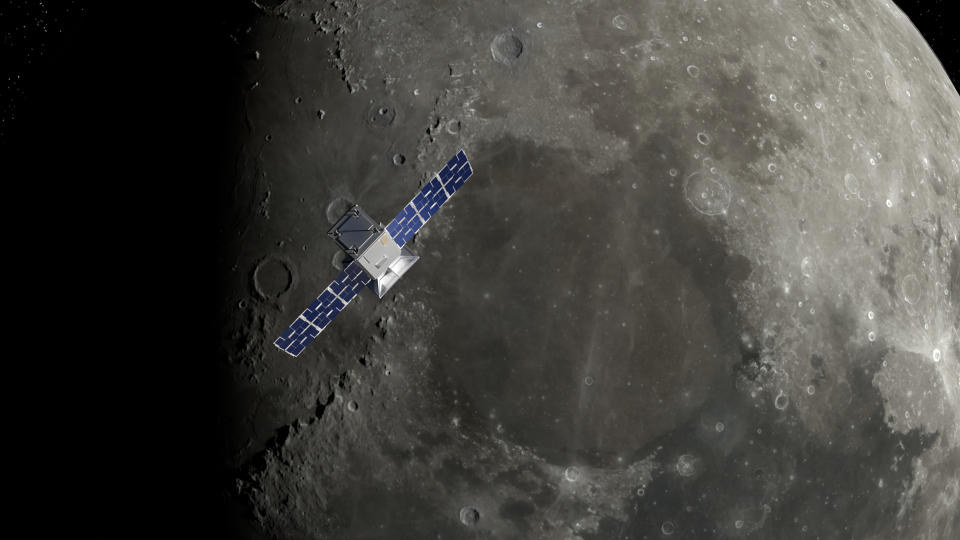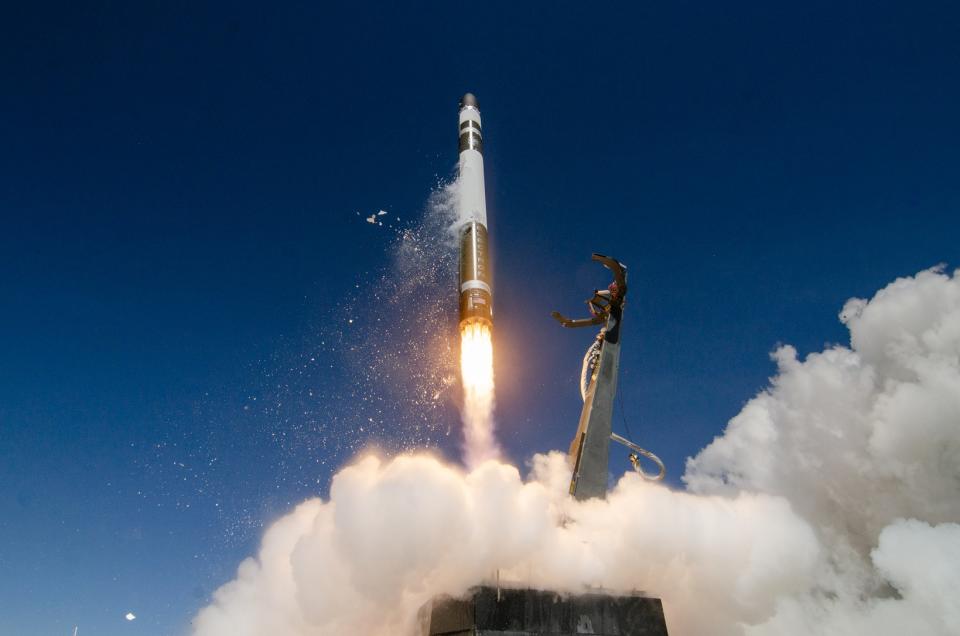Max Q: Grounded
Hello and welcome back to Max Q. By the time you read this, we'll be less than 24 hours away from the release of the first images captured by James Webb Space Telescope. In this issue:
CAPSTONE loses, then reestablishes, communication with Earth
Rocket Lab offers next-day shipping to space
News from Virgin Galactic, SpaceX and more
CAPSTONE is "happy and healthy," which is how I will always refer to CubeSats performing nominally from now on
NASA’s CAPSTONE CubeSat is “happy and healthy” after reestablishing communications with Earth, bringing to an end a nerve-wracking 24-hour period in which the spacecraft was out of touch with ground communications.
Loss of communication occurred just one day after CAPSTONE deployed from Rocket Lab’s Lunar Photon booster. CAPSTONE was operating as normal for the first 11 hours after its detachment from Photon, successfully deploying its solar arrays and communicating with a Deep Space Network (DSN) ground station in Madrid, Spain. (DNS is an international series of massive radio antennas operated by NASA for supporting deep space missions.)
During commissioning activities of the CubeSat's communications system, DSN officials noted some inconsistent data; while the team attempted to access diagnostic data to investigate this issue further, they sent an "improperly formatted command" that made CAPSTONE's radio fail to work, NASA explained on July 7. The fault detection system built into the spacecraft should've rebooted the radio, but it didn't due to a separate fault in the flight software. Eventually, the flight software cleared the fault, thus allowing CAPSTONE to reestablish communication with Earth.
CAPSTONE went on to successfully complete its first "TCM burn," the first in a series of maneuvers the CubeSat must conduct to ensure it stays on the right track for eventual insertion in its final test orbit around the moon.

Image Credits: NASA / Daniel Rutter
Rocket Lab wants to do for space services what Amazon Prime did for retail
Rocket Lab is launching a new program to allow satellite customers to turn up with their payload and have it in orbit in as little as 24 hours.
The Responsive Space Program is a little more structured than that, of course. A company couldn't just show up to Rocket Lab's launch complex with a big check and a satellite. But it does mean that companies that are part of the program can collaborate with Rocket Lab on their specific launch needs, such as reference orbits and integration specifications.
"From that point on, Rocket Lab remains in a state of readiness with rockets and satellites on standby, awaiting a notice from the customer to integrate and launch," the company said. "From arrival at the launch site, payload integration, encapsulation and launch can be completed in as little as 24 hours."

Image Credits: Sam Toms and Simon Moffatt
More news from TC
Virgin Galactic has tapped Boeing subsidiary Aurora Flight Sciences to build two new "motherships," the aircraft that carry Virgin's spaceplanes to launch altitude.
Starlink service is now available on yachts, in a new service called Starlink Maritime.
...and beyond
Kongsberg Defense and Aerospace will be acquiring a majority stake in smallsat maker NanoAvionics, in a deal that values the latter company at around $68 million. The stake is being sold by AST SpaceMobile, which is expected to net around $28 million in gross proceeds from the transaction.
L3Harris is investing around €11.2 million ($11.4 million) in Mynaric, a company that builds laser communications for space applications.
Nanoracks demonstrated a new way to take out trash generated aboard the International Space Station, and performed the first open-close cycle of the Nanoracks Bishop Airlock.
NASA shared a list of cosmic targets that will be included in the first batch of images from James Webb Space Telescope, which will be released on July 12. Mark your calendars!
Promus Ventures released a July update on the performance of "New Space" companies, including Planet, Momentus and BlackSky, comparing earnings data, stock price and revenue.
Rocket Lab's next two launches will be for the U.S. National Reconnaissance Office. The two satellite launches, the first of which is scheduled for no earlier than July 12, will take off from New Zealand within 10 days of each other.
SpaceX launched another 53 Starlink satellites from Cape Canaveral in Florida. This marks the 13th mission for that first-stage booster.
SpaceX received major pushback from Dish over its claim that allowing greater usage of the 12 GHz band would make Starlink service unusable. The conflict is being fought out in front of the U.S. Federal Communications Commission.
Stellar Ventures is launching a new fund to invest $23 million in early-stage space startups.
Vandenberg Space Force Base saw a test missile explode 11 seconds after launch. No one was injured and a investigative review board was assembled to identify the cause of the explosion.
[youtube https://www.youtube.com/watch?v=A-LY8ZZJ0nM]
Photo of the week

The Mars Perseverance Rover captured this photo on July 6. The little robot has been capturing images of the red planet since it landed on February 18, 2021. If you've never checked out the bot's raw image archive, it's worth taking a look. Image Credits: NASA/JPL-Caltech/ASU
Max Q is brought to you by me, Aria Alamalhodaei. If you enjoy reading Max Q, consider forwarding it to a friend.

 Yahoo Finance
Yahoo Finance 